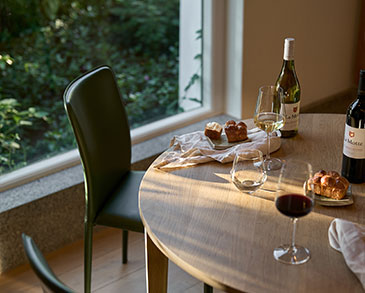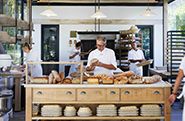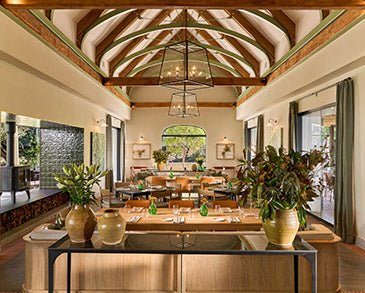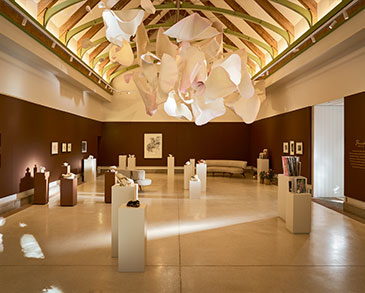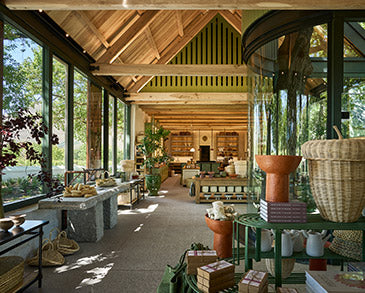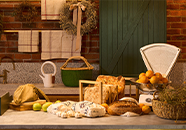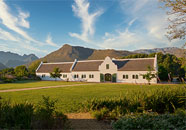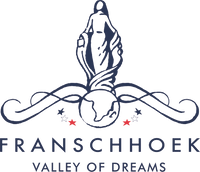PIERNEEF: AFRIKANER, SOUTH AFRICAN, AFRICANIST
PIERNEEF: AFRIKANER, SOUTH AFRICAN, AFRICANIST
Amanda Botha
Jacob Hendrik Pierneef (1886-1957) is considered by many to be the quintessential South African artist.1 In a public opinion poll in search of the 100 most famous South Africans conducted by the South African Broadcasting Company in 2004, Pierneef was the only artist to feature on this list, albeit only in the 99th position.2 He is generally considered to be one of the best of the South African masters, and his work remains much sought after at art auctions, locally and abroad.
In 1948 Pierneef’s painting The baobab tree (1934) was shown in the Tate Gallery in London as part of a travelling exhibition named ‘Contemporary South African Paintings, Drawings and Sculpture’. Sixty years later, in 2008, the same painting was on auction at Bonhams in Knightsbridge, London. According to the catalogue entry, The baobab tree has an “emblematic quality” of being “a magnificent example of Pierneef’s achievement in creating a landscape painting that is uniquely and essentially South African”. It was sold for £826 400 (R12 million), setting a new international record price for a South African work of art.3
Revisionist art historians have recently been keen to explore Pierneef’s ‘darker side’ as the painter of the ‘mythology’ of Afrikaner Nationalism.4 Since the 1980s, Pierneef’s famous landscapes have been increasingly appropriated, subverted, parodied and denigrated by young artists who have associated him with the apartheid state and Afrikaner nationalism. This should be viewed within the theoretical streams of postmodernism: deconstruction and re-creation.5
In the ever-present contestation of land and land ownership and a growing focus on expropriation of land in a democratic South Africa, it has been argued that Pierneef’s expansive landscapes embody “a vision that belongs to a brutally triumphal white past” and that his work is “recognised as a symbol of both the rise and the fall of Afrikaner Nationalism”.6
The fact that Pierneef’s landscapes were uninhabited gave rise to the contemporary criticism that they reinforced Afrikaner identification with the land to be understood as the Calvinist “promised land” with the “consequent inalienable right to its ownership”.7
In contextualising the Johannesburg Station Panels, Nico Coetzee argued that Pierneef’s landscape depicted “an invitation to possession and ownership because it is empty”. Therefore, it is reassuring (for Afrikaners) because “in its unexplored and unexploited condition, it is the expectation of the riches and potential – the sign of divine election”. This reassurance gave Afrikaners “a pictorial evocation of what they wanted to believe of the land and themselves”.8
The South African landscape was often considered the appropriate subject for interpreting the essence of our country, especially in the 20th century when landscape became a central theme in art, literature and politics.
Pierneef’s contemporaries “focused on a contemplation of nature that reflected a distinctive colonial nationalism”.9 They reinforced historical and cultural roots allied to the early white settlers’ land of origin. Pierneef, however, was interested in establishing a distinctively South African style of painting.
Fellow artist Walter Battiss said in 1942 that Pierneef “looked at features in art that were rooted in the indigenous South African context”.10 Pierneef’s close friend Anton Hendricks, a former director of the Johannesburg Art Gallery, wrote after Pierneef’s death that the artist strove to capture “the authentic soul of the South African landscape, and especially to understand the Transvaal veld from the inside”.11
Art historian Esmé Berman stated that Pierneef’s understanding of the vastness of the Transvaal bushveld and mountain ranges “corresponded with his views of asceticism and spirituality”.12 Berman also recognised that many of Pierneef’s fellow artists were more inclined to British sources of tradition, which was not his spiritual home. Pierneef, instead, drew attention to “the formal architecture of the Highveld and presented a rational and perceptive interpretation of its distinctive spatial and structural character”.13
In 1958 Matthys Bokhorst, later director of the South African National Gallery, equated Pierneef with Cézanne in writing that “as far as landscape was concerned”, he was “the Cézanne of South Africa”.14
The art historians who argued that Pierneef was a ‘political’ artist using his art to further the philosophies of Afrikaner Nationalism and even to claim the landscape in an imperialist fashion to further these aims in my view misrepresented both his personal and artistic intent. This argument rests mainly on the JFW Grosskopf text in the first monograph on Pierneef, published in 1946.15 Pierneef’s credo that South African art ought to reflect the spirit of the country had only been reinterpreted as being part of the rising of Afrikaner Nationalism at that time, years before the 1948 election.
When one turns to the text of Grosskopf, it is important to take cognisance of what the writer intended. It is stated that the text is presented as ‘an appreciation’ of Grosskopf for Pierneef’s life and his work. A closer reading shows that Grosskopf had limited conversation with Pierneef. He probably used Pierneef’s lecture notes as source material and formulated his theories of the artist based on his own personal impressions. He seemed to attribute more to Pierneef than what the artist ever had said. He admitted that Pierneef was not keen to talk about himself.16
Grosskopf was a playwright for whom Pierneef painted decor. A study of his plays shows that he probably projected his own vision onto Pierneef’s landscapes. From the most quoted references as proof of Pierneef’s “nationalist imperialism”, it is apparent that the artist referred to himself as a “Boer”, that he had a strong yearning for “freedom” in searching for a unique “Afrikaans” style of painting and that Grosskopf saw Pierneef as “an artistic prophet of his nation”.17
Perhaps the most important comment of Pierneef that Grosskopf recorded was the artist’s firm belief that a truly “national art has to be born of your own surroundings and your own soil”.18 The assumption that this ideal committed him as a supporter of the cause of Afrikaner Nationalism and the ideology of apartheid is questioned by Hayden Proud, Curator of Historical Collections and Sculpture at the Iziko South African National Gallery, in a recent essay on Pierneef. In quoting Stephan Welz, doyen of the South African art market, he states, “Pierneef was not necessarily as consistent or rigid an adherent of Afrikaner Nationalism’s narrow cause as has been claimed.”19
Viewing these comments within the context of the post Anglo Boer (or South African) War and pre apartheid era, they do not seem all that odd. Pierneef was a South African by birth within a Dutch-Afrikaner household, and referring to him as a ‘Boer’ was not strange at all. He yearned for freedom and searched for a uniquely South African style of landscape painting, believing that the impetus to achieve that was within the confines of the topography of the country. Does this not make him perhaps the first truly South African/ ‘African’ painter?
The word ‘Afrikaans’ as being used by Grosskopf in describing the landscape (mostly of the old Transvaal) was used within the context of the post Anglo Boer (or South African) War era. It was also used within the mindset of the day when there was not yet a general political understanding of a united South Africa as part of the continent of Africa.20 In colonised Africa, such a general understanding of unity within the continent of Africa was still foreign.
Pierneef had contact with African states outside South Africa, albeit only as a passenger on mail ships. He shared his impressions of other African landscapes in many drawings and paintings. He had, in fact, a broader understanding of the African context than any of his contemporaries, and perhaps his plea for a ‘South African style’ can also be viewed in this regard.
Yes, Pierneef can be described as an Africanist. In his ‘Foreword’ to the Standard Bank exhibition of Pierneef’s works in 2015, the bank’s chairman, Fred Phaswana, wrote, “Certainly, Pierneef could be described as a nationalist, if not an Africanist. Throughout his life, he sought to create a genuinely South African style of art and architecture that was based on neither the Cape Dutch, nor English traditions. Ironically, it was his desire to create a uniquely African style that launched him into painting fulltime.”
Phaswana suggested that Pierneef’s art could not be “relegated to the old order, along with apartheid”. He is of the opinion that “Pierneef’s works perfectly describe a democratic South Africa committed to setting its own standards.” His works are still as popular today as in his day because his work reveals “our love for the South African landscape…we are passionate about the uniqueness of our country, and that passion crosses cultures and political divides”.21
Pierneef is a lone voice, a trendsetter, the first professional artist to realise that South African art needs to find its own shape. He was strongly in favour of breaking away from the British and especially Victorian colonial trends in order to define such a unique South African style.
Pierneef’s quest to define an authentic personal style was informed by larger forces. The artist was 23 when the Union of South Africa was founded as a dominion of the British Empire in 1910. Disparate groupings of people and political territories were unified under a single flag. The notion of ‘South Africanism’ as a new identity was propagated by the defeated Boer generals Jan Smuts and Louis Botha.
Pierneef was a ‘true South African’ embracing the diversity of our social fabric. Amongst his closest and trusted friends were British immigrants, and he felt at ease in the company of English-speaking fellow artists. He was a dedicated member of an English-speaking artist group known as ‘The Individualists’, founded in 1911 in Pretoria and was a respected member of the mainly Anglophile South African Society of Artists. He enjoyed the patronage and friendship of British royalty and was on cordial terms with Princess Alice, Countess of Athlone. Pierneef also had links with the 1947 Royal Visit.
In the earlier years of the Afrikaner Broederbond, Pierneef was invited to become a member of this organisation. At the time, the focus was on the ‘social and material upliftment’ of the Afrikaner after the Depression of the 1930s.22 He terminated his membership of his own accord in 1946.23
Pierneef was a popular public speaker whose influence reached beyond the limited boundaries of his own art. His vision was for a unique South African style of art that would reflect the spirit of his country of origin and that could be generally recognised as being inspired by the country. He firmly believed that this would guarantee quality art that would receive international recognition. Furthermore, he openly propagated the belief that South African art had to have its own distinctive style – “a style that would embody the very spirit of this part of Africa”.24
Pierneef created haunting images of the country’s great interior spaces, often dominated by equally impressive cloudscapes, which embodied the ‘very spirit’ of this African region.
Phaswana expressed his view of this ‘very spirit’ with passion: “When you look at a Pierneef, you can’t avoid feeling the stunning vastness of the South African landscape, you cannot but be transported to a specific place in your memory, and with that comes a flood of emotions.”25
Pierneef’s style was to reduce and simplify the landscape to geometric structures, using flat planes, lines and colour to present the harmony and order in nature. This resulted in a formalised, an ordered and a monumental view of the South African landscape, with dramatic light and colour. A common feature of Pierneef’s landscapes is brilliant light, which he employed not only as a means to articulate form but also to imbue his landscapes with radiant light. His devotion to capturing the strong local sunlight contributed in part to the development of his characteristically South African landscapes.
In his paintings, Pierneef achieved unity mainly by way of line – the rhythm of composition lines. Linearity is of the utmost importance in most of his paintings. Due to the importance of line in Pierneef’s work, colour plays a subordinate role. The artist applied colour merely to indicate the character and the atmosphere of a specific landscape. He was able to suggest a great diversity of atmosphere and mood in his landscape with the use of limited earthy colours such as purple, yellow, blue and tones of grey to white.
The success of his painting hinges on Pierneef’s extraordinary ability to harness keen observation and sound technical expertise to his profound knowledge of the South African landscape. His architectonic approach to painting, in which he ordered composition by foregrounding its underlying structure, was ideally suited to capturing the vastness of the South African landscape.
The Bushveld landscape was a constant source of inspiration to Pierneef and one of his favourite subjects. He depicted the region strikingly in many different moods, compositions and colours. The artist took the verdant panorama and transformed it so that the whole landscape became a rhythm absorbing the viewer in the lyrical nature of the scene.
In preparation for the Station Panels, Pierneef made a considerable number of drawings to compile a composition from a combination of these sketches. The Station panel ‘Bushveld’ consists of a collection of trees drawn in separate drawings, in various localities in and around Rustenburg. Afterwards, he made a number of paintings in different sizes as well as linocuts of the Bushveld where the locations are not clear.
According to Albert Werth, past director of the Pretoria Art Museum who curated a number of Pierneef exhibitions, there is “no characteristic style (that) can always be associated with a specific period of his creative career because of the way in which Pierneef alternated his different styles”.26
The highly respected art historian Esmé Berman divided Pierneef’s career into three major periods: apprenticeship, 1902-1924; discovery and mastery, 1925-1936; and consolidation and repetition, 1937-1957. She admitted that “not all critics will agree on the descriptions or the years of demarcation and there are certainly important works within his oeuvre of both the early and the later phases”.27
For instance, the style in which a strongly linear-decorative work was painted as early as 1924 was really only developed in the period from 1926 till 1934. Similarly, the painting of a watercolour in 1914 shows definite influences of Art Nouveau. “Consequently many misconceptions exist today about Pierneef the artist. This erratic pattern complicates matters for a student of Pierneef’s art.”28
Pierneef visited South West Africa (today Namibia) in April 1923. He was “elated and threw himself wholeheartedly into making numerous sketches and paintings of the region”.29 It is claimed that some of his best work was done at that time. Many of the scenes formed the foundation for many of his later works and were certainly the introduction to a formative period in his art with respect to the South African landscape.
Pierneef went to Europe in 1925 where he became acquainted with a number of contemporary artistic movements, of which the most important for him personally was the formal decorative theories of Willem van Konijnenburg and Jan Toorop. Van Konijnenburg expounded his theories in a book, De Aesthetische Idee, published in 1916. In his opinion, ‘ideal beauty’ is born from harmony and both react positively to mathematical laws. His emphasis on the role of rhythm in establishing unity in painting had an important influence on Pierneef’s art.30 Pierneef was positively influenced by the Art Nouveau style of Van Konijnenburg. The impact of this influence is particularly noticeable in the many designs of ex libris and book and magazine covers.
The series of paintings known as the Johannesburg Station Panels, which took him three years to complete, played a major role in his creative life. The significance in these large scenic works lies in the numerous sketches, preparatory studies and compositions from which the panels were created, and perhaps more so in the many variations on the Station Panels – easel paintings of several sizes – that subsequently flowed from his brush. Even in these easel paintings he often used different styles.
Facets of the South African landscape were captured in numerous studies and sketches. All these recurred in his later paintings. The panels were subjected to strict geometric composition. The artist’s reasonably realistic landscape studies were gradually changed, arranged and simplified into a geometric unity. This process of simplification serves as a valuable key to the understanding of Pierneef’s total oeuvre.
In his preliminary studies on the murals, Pierneef built up a kind of ‘vocabulary’: forms, colour schemes and types of lines. Werth suggested that the influence of San rock art spoke clearly here – the shallow curves, short vertical lines and long horizontal lines.31
Pierneef’s stylisation of form was inspired as much by his studies of San rock art as by his knowledge of European modernist trends. First Pierneef and later Walter Battiss started adopting African icons into their art. They made use of San pictorial expressions and motifs.
Pierneef made hundreds of copies of San drawings mostly done by an earlier explorer George Stow. In 1922 he completed a frieze for Ficksburg High School hall using San motifs. Battiss’ first encounter with San paintings was in 1933. From 1938 onwards, his adoption of San ‘primitive art’ became one of the foundations for his future paintings.32
Pierneef had long been fascinated by South African rock paintings. He showed great admiration for San rock art and was the first South African artist to recognise this as a unique and important artistic contribution of South Africa’s first inhabitants. He vociferously copied rock art drawings and openly expressed his admiration for these early indigenous artists and admitted the influence that they had on his own development as an artist. It is on record that Pierneef said that after the Ficksburg assignment, he no longer doubted the wisdom of his decision to become a fulltime artist.33
Pierneef felt strongly attached to the spirit of the early indigenous artists. His geometric art principles were influenced by San motifs.34 He understood that the foundation on which to build a South African artistic tradition was to recognise the artistic products of the African continent and not slavishly follow the rules of colonial art that seemed to have been the norm until the late 1950s. Pierneef’s exploration of rock art and the meaning thereof for modern-day art has not been researched until the 1990s in the work that Pippa Skotnes undertook.35
African craft symbols can also be found in Pierneef’s paintings. He made use, for instance, of a diagonal line that crosses through a semicircle, which is an African symbol presenting the universe.36
Pierneef bought a small farm east of Pretoria in 1939. His admiration for the rock artists was epitomised by the copy of a drawing of a resting eland. His close friend the sculptor Coert Steynberg carved the eland in relief into the door of the gateway leading to Pierneef’s home or ‘kraal’ as Pierneef himself referred to it. His house, in the form of a ‘kraal’, was constructed from the stone on the farm and the grass was used for thatching. He named his home ‘Elangeni’, meaning in Zulu ‘in the sun’.37
Finally, Pierneef did create a South African style of landscape painting. He searched for indigenous links with the early San and had knowledge of and respect for other African cultural traditions and craftwork. He firmly believed that South African art would be recognised internationally. Within his time and location, he was probably our first professional ‘African’ artist.
REFERENCES
- Proud, H. 2015. “Perspectives on the Pierneef ‘Problem’”. In: Van Rensburg, W (ed.) A Space for Landscape: The Work of JH Pierneef. Johannesburg: Standard Bank, p. 22.
- http://www. Wikipedia.org/wiki/Great_South_Africans.
- Hillebrand, M. 2011. “White Artists in Context”. In: Carman, J (ed.) Visual Century South African Art in Context. (Volume 1). Johannesburg: Wits University Press, p. 135.
- http://www. sahistory.org.za/pages/people/bios/pierneef%20 -jh.htm.
- Van Rensburg, W. 2015. “Introduction to A Space for Landscape”. In: Van Rensburg, W (ed.) A Space for Landscape: The Work of JH Pierneef. Johannesburg: Standard Bank, p. 18-20.
- Van Rensburg, W. 2015. “Introduction to A Space for Landscape”. In: Van Rensburg, W (ed.) A Space for Landscape: The Work of JH Pierneef. Johannesburg: Standard Bank, p. 13.
- Freschi, F. 2011. “Afrikaner Nationalism, Modernity and the Changing Canon of ‘High Art’”. In: Van Robbroeck, L (ed.) Visual Century South African Art in Context. (Volume 2). Johannesburg: Wits University Press, p. 9.
- Coetzee, NJ. 1992. Pierneef, Land and Landscape: The Johannesburg Station Panels in Context. Johannesburg Art Gallery, p. 25.
- Leeb-du Toit, J. 2011. “Land and Landlessness. Revisiting the South African Landscape”. In: Carman, J (ed.) Visual Century South African Art in Context. (Volume 1). Johannesburg: Wits University Press, p. 177.
- Leeb-du Toit, J. 2011. p.183.
- Hendriks, A. 1968. “Jacob Hendrik Pierneef”. In: Our Art 1. First published in 1959 in Lantern. Pretoria: Foundation for Education, Science and Technology.
- Quoted by Leeb-du Toit, J. 2011. p. 183.
- Berman, E. 1983. Art and Artists of South Africa. An Illustrated Biographical Dictionary and Historical Survey of Painters, Sculptors and Graphic Artists Since 1875. Cape Town: AA Balkema, p. 330.
- Bokhorst, M. 1958. “JH Pierneef”. SA Panorama Volume 3, no. 4, April, p. 39.
- Grosskopf, JFW. 1946. Hendrik Pierneef. Die Man en sy Werk. Pretoria: JL van Schaik.
- Ibid. p. 10, 21.
- Ibid. p. 10-11, 14, 18, 21-22.
- Ibid. p. 23.
- Proud, H. 2015. p. 25.
- Kannemeyer, JC. 2005. Die Afrikaanse Literatuur (1652-2004). Cape Town: Human & Rousseau. p. 118, 132.
- Phaswana, F. 2015. “Foreword”. In: Van Rensburg, W (ed.) A Space for Landscape: The Work of JH Pierneef. Johannesburg: Standard Bank, p. 7.
- Ferreira, OJO. 1990. “Flitsbeelde van Pierneef se Suid-Afrika”. In: Nel, PG (ed.) JH Pierneef: Sy Lewe en sy Werk. Cape Town: Perskor, p. 19.
- Proud, H. 2015. p. 33.
- http://www.bonhams.com/press-release/9739.
- Phaswana, F. 2015. p. 7
- Werth, AJ. 1980. “The Painter JH Pierneef’. In: Pierneef Van Wouw. Paintings and Sculptures by Two South African Masters. Stellenbosch: The Rembrandt van Rijn Art Foundation. unpaginated.
- Berman, E. 1983. p. 223.
- Werth, AJ. 1980. unpaginated.
- Pretorius, EE. 1990. “Biografie van JH Pierneef”. In: Nel, PG (ed.) JH Pierneef: Sy Lewe en sy Werk. Cape Town: Perskor, p. 60, 61.
- Van der Waal-Braaksma, G. 1990. “Pierneef die Kunstenaar”. In: Nel, PG (ed.) JH Pierneef: Sy Lewe en sy Werk. Cape Town: Perskor, p. 122, 136.
- Werth, AJ. 1980. unpaginated.
- Schoonraad, M. 1976. Walter Battiss. Cape Town: Struik, p. 11.
- Pretorius, EE. 1990. p. 55.
- Schoonraad, M. 1969. “Dr. JH Pierneef: Biografiese Skets en sy Belangstelling in die Rotskuns”. In: Historia, 14 (2), June. p. 129.
- Skotnes, P (ed.). 1991. Sound from the Thinking Strings. Cape Town: Axeage.
- Bokhorst, M. 1958. p. 40.
- Pretorius, EE. 1990. p. 99.


